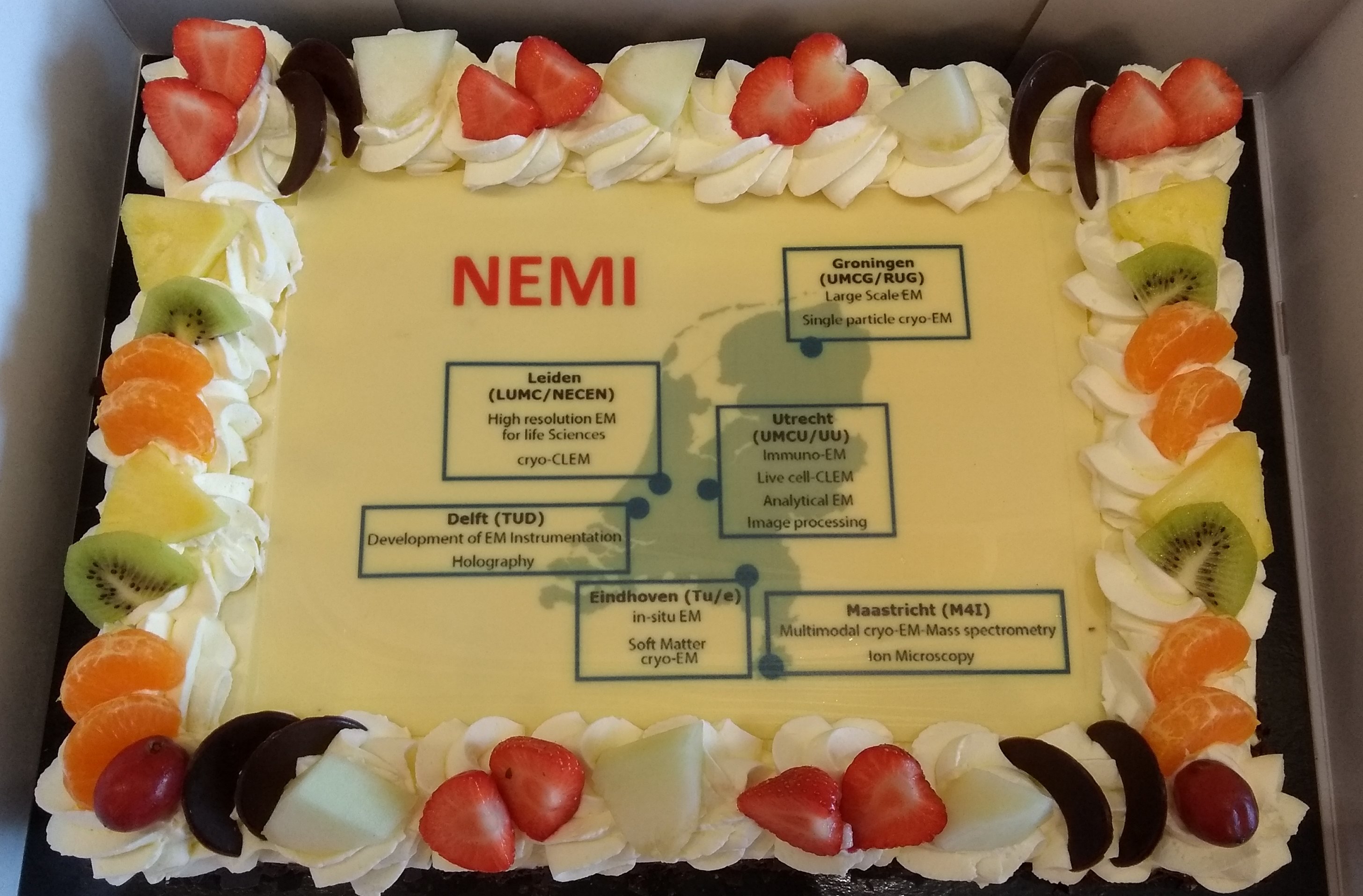NWO grant of €17 million for the development of electron microscopy in the Netherlands
The Netherlands Organisation for Scientific Research (NWO) has awarded a grant of more than 17 million euros for the further development of the Netherlands Electron Microscopy Infrastructure (NEMI). The network consists of five university medical centres and eight universities, with Utrecht as the coordinating university. The grant will enable the scientists to combine various technologies in the field of electron microscopy and as a result to learn more about the composition and coherence of the biological and material micro-world.
The Netherlands is a global leader in electron microscopy (EM). This technology provides extremely detailed insight into the smallest building blocks of humans, animals and materials. We can even use electron microscopy to visualise, quite literally, the basis of life and the atomic composition of materials. Thanks to new technical developments, scientists are to push the boundaries of electron microscopy even further.
Judith Klumperman, Professor of Cell Biology and chair of NEMI, likes to compare electron microscopy with Google Earth: “You fly across the world and can zoom in on the table in your garden. With EM, you travel through the body or a material and zoom in on particles that are smaller than a millionth of a millimetre. By using different EM techniques we can also go one step further: who puts the table where in the garden and when, and how long has it been there? What kind of material is it made of? And what happens to the particles in the single-cell algae that turn the table green in the winter?” Scientists use EM techniques to answer these types of questions at a nanoparticle level. Thanks to EM, we will be able to learn more and more about the molecular mechanisms of diseases and even develop new smart and sustainable materials.”
NEMI
There are various different EM techniques. In the NEMI network (Netherlands Electron Microscopy Infrastructure), participating organisations are able to combine and share all the techniques to create an increasingly complete picture of structures and processes that form the basis of life and materials. NEMI partners with specialist EM expertise are responsible for taking that knowledge to the next level. By making joint decisions as to which of the partners is to specialise in which area, a more strategic approach can be developed for the purchase and use of EM equipment. An electron microscope costs several millions to buy and is expensive to maintain. The NWO grant will be used to purchase the latest EM equipment, to develop the next generation of microscopes and to make it easier for more research groups to use and have access to EM.
Delft
For TU Delft, the most important NEMI investment will be the purchase of two so-called ‘multi-beam microscopes’, one of which will be located in Delft and the other in Groningen. A multi-beam microscope is a system that scans a sample with several electron beams at the same time. The prototype developed in Delft has no fewer than 196 beams, which enables samples to be scanned 196 times faster than with a standard electron microscope. The TU Delft prototype is currently being developed into a commercial product. Researcher Jacob Hoogenboom: “This grant underlines Delft’s international status as a place for the development of unique and scientifically innovative instrumentation for electron microscopy.”
NEMI also recognises TU Delft as a centre for electron microscopy in the field of materials for quantum technology. The research group of Sonia Conesa-Boj (Quantum Nanoscience) is being awarded 900,000 euros as part of the project to upgrade the Titan TEM microscope, which will allow new materials research to be carried out on a nano-scale. In addition, the new research group of Arjen Jakobi (BioNanoscience) will benefit from NEMI. His group is working with cryogenic electron microscopy (cryo-EM), a technology in which biological samples are cooled to very low temperatures, enabling extremely detailed images to be made of biomolecules. The inventors of cryo-EM received the Nobel Prize for Chemistry last year. Thanks to NEMI, Arjen Jakobi’s group has easier access to the high-resolution system located at the Netherlands Centre for Electron Nanoscopy in Leiden.
Participating organisations
University Medical Center Utrecht (UMCU), Utrecht University, Leiden University Medical Centre (LUMC), Leiden University, University Medical Center Groningen (UMCG), University of Groningen (RUG), Maastricht University, TU Delft, Academic Medical Center of the University of Amsterdam (AMC), Eindhoven University of Technology (TU/e), Maastricht Multimodal Molecular Imaging Institute (M4I), Netherlands Centre for Electron Nanoscopy (NeCEN), Radboud UMC, Wageningen University, University of Twente.


